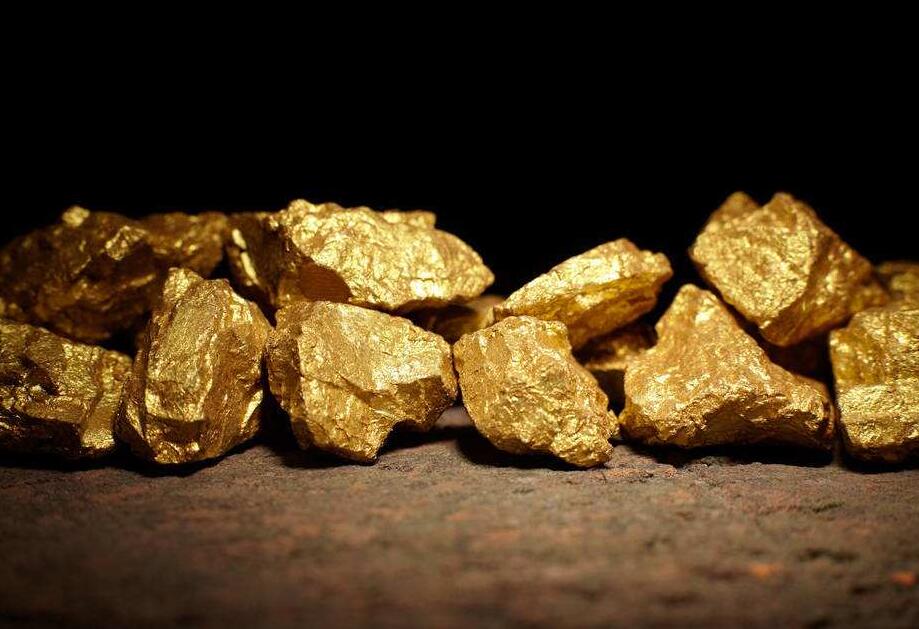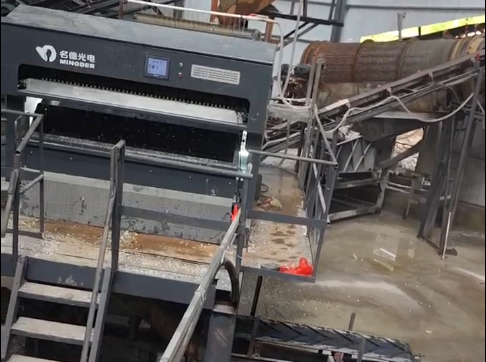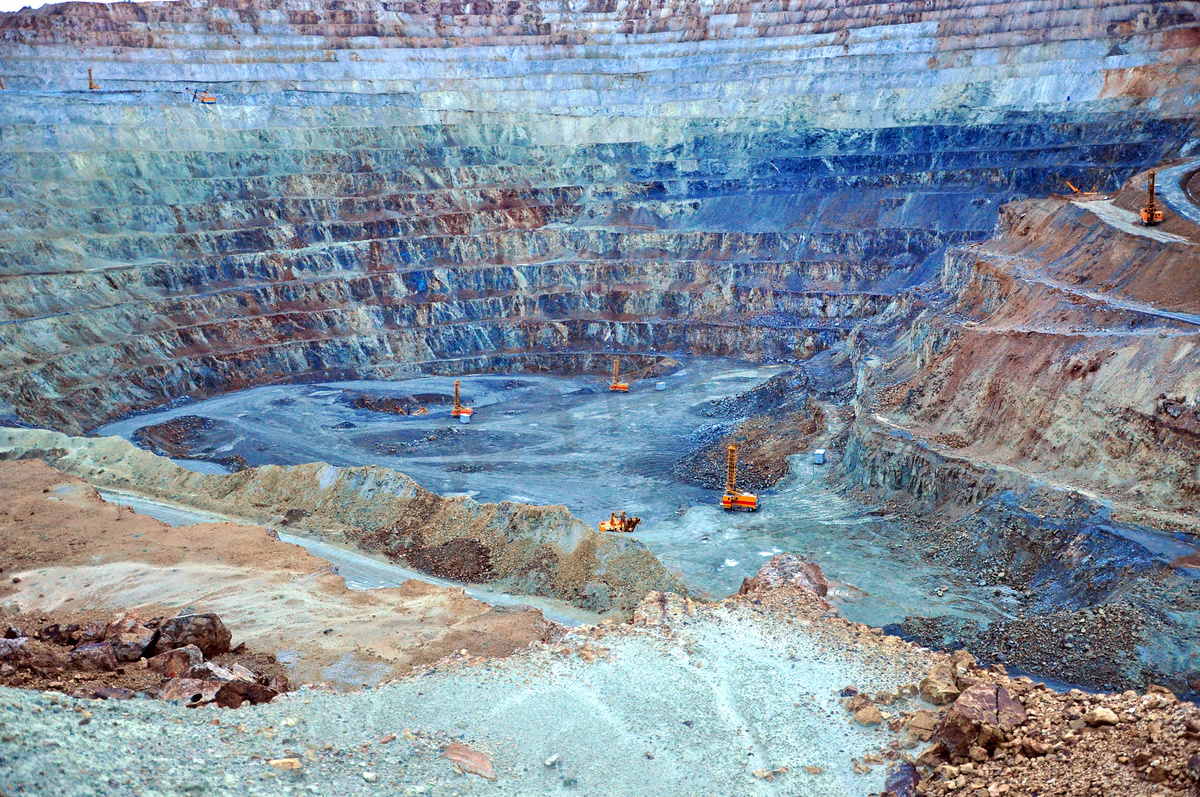اشترك في نشرتنا الإخبارية وكن دائمًا أول من يسمع بما يحدث.
Innovation-driven development: Mingde Optoelectronics' mineral processing equipment boosts the value of the gold mining industry
May 19, 2025In recent years, the development of gold resources has gradually transformed towards low-grade and complex associated ores. Traditional beneficiation processes are confronted with problems such as high costs, low efficiency, and resource waste. As a leading enterprise in the field of intelligent sorting, Mingde Optoelectronics, relying on its independently developed spectral recognition technology and artificial intelligence algorithms, has launched a new generation of intelligent mineral processing equipment system, opening up an innovative path of "improving quality and efficiency and achieving green development" for gold mining enterprises. Its ore color sorter and AI intelligent sorting machine have achieved technological breakthroughs in multiple projects in Henan, Fujian, Jiangxi, Shandong and other places, promoting the development and utilization of gold resources to a new height.

Case One: Application Practice of Ore Color Sorter in a Vein Quartz Gold Mine in Henan Province
In a certain vein quartz gold mine in Henan Province, quartz is the main mineral (with a content of 60%-90%), and gold is mostly in the form of fine particles wrapped in quartz or sulfides such as pyrite and arsenopyrite, with a fine particle size distribution (often requiring grinding to -200 mesh), which leads to the traditional separation process relying on full-grain grinding and flotation, resulting in high costs. The high hardness of quartz causes the grinding power consumption to reach 30-50 KWH/ton, resulting in significant equipment wear. Moreover, a large amount of inhibitors need to be added in the flotation process to control the rise of quartz, further increasing the cost of reagents. In addition, fine-grained quartz leads to an increase in the viscosity of the pulp, a 5%-10% reduction in the gold recovery rate, and the tailings account for 70%-80% of the raw ore, with a processing cost of 15-20 yuan per ton.

In response to the above issues, a certain mining enterprise can systematically optimize its process by adopting the Mingde ore color sorter pre-selection technology. Based on the color difference between quartz and sulfides (grayish-white quartz and yellowish-brown sulfides), after coarse crushing (with a particle size of 10-50mm), 40% to 60% of the pure quartz without gold is sorted through AI optical recognition and directly sold as quartz sand. After preselection, sulfides in the ore are enriched, the grinding volume is reduced by more than 50%, the power consumption per ton of ore is decreased by 50%, the dosage of flotation reagents is simultaneously reduced by 50%, and the gold recovery rate is increased by 3% to 5%. The amount of tailings will then drop to 40%-60%, the processing cost will be reduced by 40%-50%, and an additional income of 200-500 yuan per ton can be earned from the separation of quartz. After the process optimization, the mine can construct the process of "coarse crushing - color separation - grinding - flotation - tailings classification", reducing the comprehensive cost by 40%-60%, increasing the gold recovery rate to over 95%, and simultaneously achieving the resource utilization of quartz. After the project was implemented, the feed grade of the raw ore jumped from 1.5g/t to 3.2g/t, and the annual processing capacity increased by 180,000 tons. The waste quartz sand produced by sorting is sold as high-quality raw materials for building materials, generating an annual revenue of over 18 million yuan, truly achieving the full utilization of resources. The person in charge of the mining area said, "This system not only solves the problem of low-grade ore storage, but also converts tailings into new economic growth points, providing a brand-new idea for the sustainable development of the mine."
Case Two: Breakthrough in AI Intelligent Sorting Machine for Jiangxi Sulfur-Iron Associated Gold Mine
A large sulfur-iron type gold mine in Jiangxi Province has problems such as complex mineral symbiosis, low grade, high reagent consumption in traditional flotation processes, and difficult separation of sulfur and gold. The Mingde artificial intelligence sorting machine achieves efficient pre-selection and waste disposal of ores through multi-modal sensing and deep learning algorithms. This technology is based on the close symbiotic nature of gold and sulfides (such as pyrite, pyrrhotite, etc.), and uses multi-dimensional data fusion analysis including hyperspectral recognition and high-resolution imaging to accurately identify the physicochemical differences between gold-bearing pyrite and gangue minerals. During the sorting process, after the ores are crushed and screened, they enter the intelligent sorting system. Through dynamic modeling and real-time analysis of the surface characteristics of the minerals, combined with the occurrence law of gold elements in pyrite minerals, a "gold-sulfur" correlation criterion model is established, which can effectively distinguish high-value ore blocks from low-grade waste rocks. Industrial tests show that the pre-selection and waste disposal rate of this equipment for sulfur-iron associated gold deposits reaches 25%-40%, and the loss rate of waste stone gold is controlled below 0.1g/t, significantly reducing the processing volume and chemical consumption of subsequent grinding and flotation processes.

The promotion of this technology provides a new idea for the development of complex associated gold mines. By achieving intensive resource utilization through front-end pre-selection, it not only enhances the economic benefits of mineral processing but also reduces tailings discharge and energy consumption, meeting the requirements of green mine construction. The operation data of the project shows that the early disposal rate of the system reaches 35%, the gold grade of the feed ore increases by 1.5 times, and the gold content of the sulfur concentrate drops to below 0.1g/t. Compared with traditional processes, it saves 4.2 million yuan in chemical agent costs annually, reduces tailings discharge by 60,000 tons, and lowers the energy consumption per unit of the selected ore by 35%, truly achieving "green gold extraction".
Technological innovation leads industry transformation
Mingde Optoelectronics continues to lead the industry with two core technological advantages:
1.Spectral Big Data Platform: Build a mineral feature database covering over 500 mines worldwide and quickly adapt to new mineral types through transfer learning technology.
2.Intelligent decision engine: Develop a system with self-optimization capabilities, reducing the dynamic adjustment response time of sorting parameters to 50ms.
At present, its equipment has been implemented in over 200 projects in 15 countries, helping customers increase resource utilization by an average of 42% and reduce mineral processing costs by 35%. As a person in charge of a mining industry in Yunnan said, "The AI sorting machine not only brings economic benefits but also promotes us to establish a digital mine management system, which is a value that traditional equipment cannot reach." With the in-depth advancement of the "dual carbon" strategy, in the future, intelligent sorting technology is bound to reshape the landscape of the gold industry.